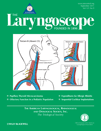What is the effect of time between sequential cochlear implantations on hearing in adults and children? A systematic review of the literature
Abstract
Objectives/Hypothesis:
Bilateral cochlear implantation is a safe and effective intervention for severe sensorineural hearing loss and is believed to be more effective than unilateral implantation. This review article investigates the effect of time between sequential cochlear implantations on hearing results in both adults and children.
Study Design:
Systematic review of cohort studies.
Methods:
We searched PubMed, Embase, and CINAHL from inception to August 16, 2010, using the terms hearing loss, cochlear implant, delay, and their synonyms.
Results:
Eleven studies evaluating the effect of time between sequential cochlear implantations on hearing performance were included. Although the quality of studies was poor because of a significant risk of bias, all studies reported that auditory performance is better in a bilateral listening situation than with either one cochlear implant activated unilaterally. Five studies discussed postlingually deafened adults. In four, bilateral hearing was not affected by the amount of time between implantations. One study did report a negative effect of delay on speech intelligibility in silence. Seven studies discussed prelingually deafened children. None reported a negative effect of interimplantation delay on sound localization performance. One study reported poorer results after extended intervals on speech intelligibility in silence and two in noise.
Conclusions:
Current evidence suggests that a second implant can be beneficial even after a substantial interval between sequential implantations. The quality of the evidence is, however, rather poor; to confirm this postulation, high-quality trials assessing the effectiveness of a second cochlear implant after a time delay should be initiated.




